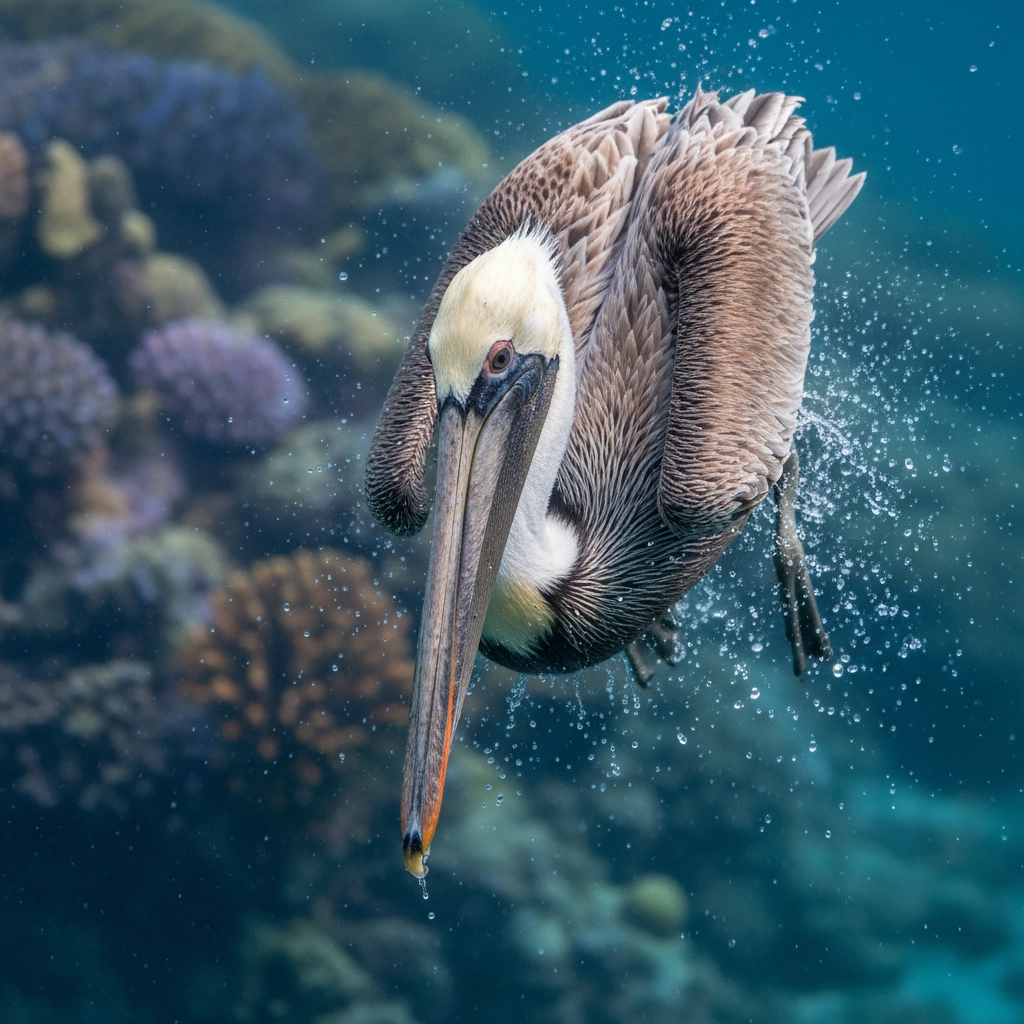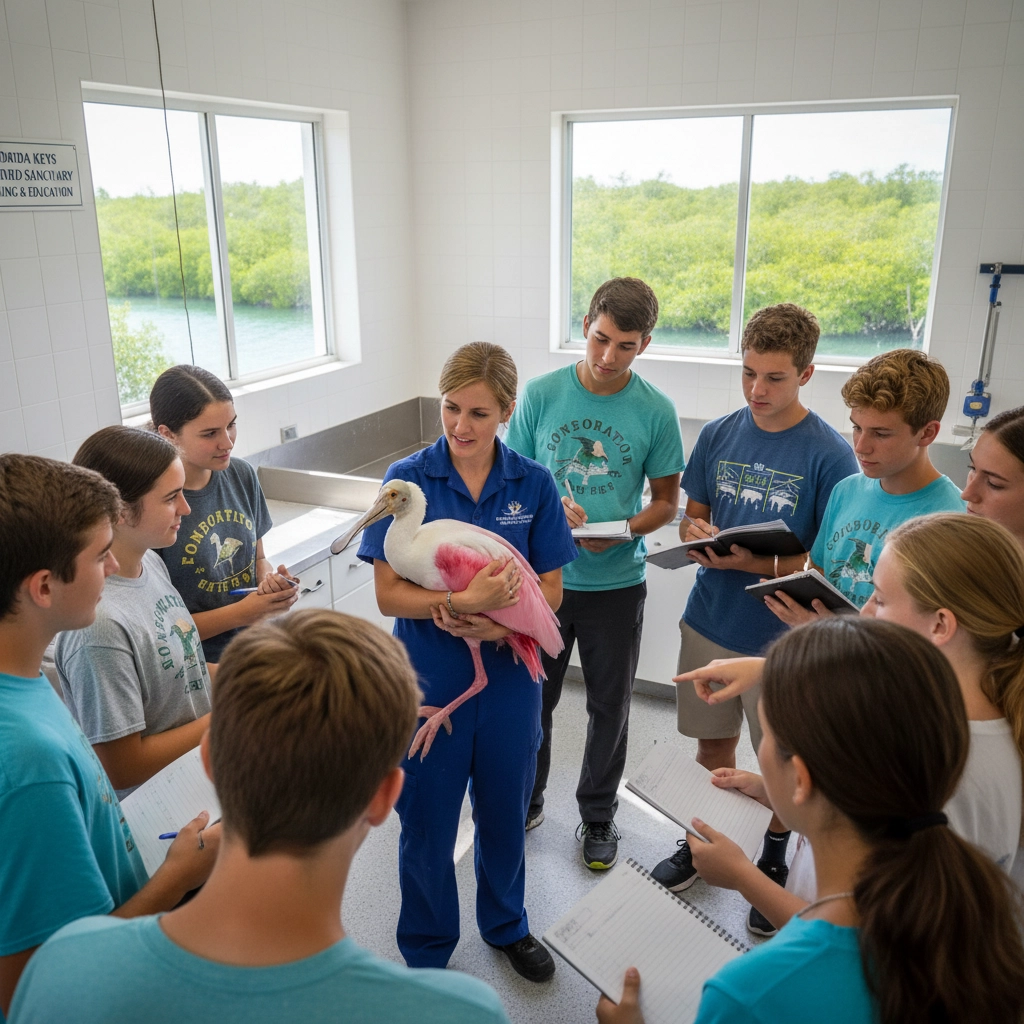Sea Birds of the Florida Keys and Supporting the Wild Bird Sanctuary
- Caleb Mullenix
- Oct 19
- 5 min read
Understanding avian ecology and supporting wildlife conservation represents a cornerstone of comprehensive marine science education. The Florida Keys provide an unparalleled classroom for students to engage in hands-on learning while contributing meaningfully to conservation efforts through the Florida Keys Wild Bird Sanctuary. Marine science expeditions to this unique ecosystem offer educators the opportunity to combine rigorous scientific study with impactful service learning experiences.
Educational Significance of Florida Keys Avian Studies
The Florida Keys host over 250 bird species utilizing the National Wildlife Refuges throughout the island chain, creating an exceptional outdoor laboratory for student research and observation. This remarkable diversity stems from the Keys' position along major migratory routes and their varied habitats, including mangrove forests, tropical hardwood hammocks, and coastal wetlands. Students participating in wildlife conservation student travel to this region gain direct exposure to ecological principles, species adaptation, and habitat interconnectedness that cannot be replicated in traditional classroom settings.
Establishing clear learning objectives for avian studies ensures maximum educational impact. Begin by researching the seasonal migration patterns and resident species your students will encounter during their visit. Create detailed observation protocols that encourage systematic data collection and scientific documentation. Emphasize the importance of maintaining detailed field journals that students can reference throughout their academic careers.

Key Species for Student Observation and Study
Brown Pelicans serve as an excellent focal species for student research, representing the smallest of eight pelican species while demonstrating remarkable adaptations for marine life. These birds showcase distinctive diving behaviors and specialized anatomical features, including their iconic gular pouches used for fish capture. Students can observe feeding techniques, nesting behaviors, and social dynamics while learning about the species' recovery from near-extinction due to DDT contamination.
Magnificent Frigate Birds provide compelling examples of aerial mastery and predatory behavior. These remarkable birds remain airborne for weeks, utilizing wind currents with extraordinary efficiency. Their kleptoparasitic feeding behavior: stealing prey from other seabirds: offers students opportunities to observe interspecies interactions and competitive ecological strategies. Document their distinctive long pointed wings and deeply forked tails during field observations.
Ospreys demonstrate specialized hunting techniques that captivate student attention while illustrating predator-prey relationships. Often mistaken for bald eagles, these fish-eating raptors possess wingspans reaching 71 inches and showcase remarkable diving precision. Encourage students to observe their distinctive brown and white plumage patterns and document their fishing success rates during different tidal conditions.
Great White Herons hold particular significance as they exist exclusively in South Florida and the Florida Keys, making encounters with this species especially valuable for students. As the largest heron species in the region, they provide excellent opportunities for students to study wading bird adaptations and feeding strategies. Additionally, the unique Würdemann's Heron: a hybrid between Great Blue and Great White Herons: offers fascinating insights into species variation and genetic diversity.

Roseate Spoonbills demonstrate the direct connection between diet and physical appearance, as their brilliant pink coloration results from carotenoids consumed through their crustacean diet. Students can investigate this relationship while observing their distinctive spoon-shaped bills and feeding behaviors in shallow waters. This species provides excellent opportunities for discussing food webs and nutrient cycling within marine ecosystems.
Hands-on Learning Opportunities and Field Research
Implement structured observation protocols that engage students in authentic scientific research. Begin each day with specific objectives for bird identification, behavior documentation, and habitat assessment. Provide students with standardized data collection sheets that encourage systematic recording of species encountered, behaviors observed, and environmental conditions noted.
Encourage students to conduct comparative studies between different habitat types within the Keys. Mangrove forests support different bird communities than coral reef environments or seagrass beds. Guide students in analyzing these habitat preferences and discussing the ecological factors that influence species distribution patterns.
Establish photography and sketching protocols that enhance observational skills while creating valuable documentation for classroom follow-up activities. Emphasize the importance of maintaining respectful distances from wildlife and following all established guidelines for ethical wildlife observation.

Create opportunities for students to contribute to citizen science projects during their expedition. Many ongoing research initiatives welcome student participation in data collection, providing authentic research experiences while contributing to scientific knowledge. Coordinate with local researchers and conservation organizations to identify appropriate projects aligned with your visit dates.
Supporting the Florida Keys Wild Bird Sanctuary
The Florida Keys Wild Bird Center, also known as the Laura Quinn Wild Bird Sanctuary, operates as a critical conservation facility dedicated to rescue, rehabilitation, and release of injured native and migratory birds. Located in Tavernier, this nonprofit organization houses over one hundred non-releasable permanent residents, including hawks, owls, vultures, pelicans, and gulls that receive lifetime care following injuries preventing their return to the wild.
Integrate service learning opportunities by arranging educational tours of the sanctuary facility. Students gain firsthand exposure to wildlife rehabilitation procedures while learning about the challenges facing bird populations in the Florida Keys. These experiences provide powerful connections between conservation theory and practical application, reinforcing the importance of environmental stewardship.
Establish pre-visit fundraising activities that allow students to contribute meaningfully to the sanctuary's mission. Organize school-wide awareness campaigns highlighting the sanctuary's work and the threats facing marine bird populations. Encourage students to research specific species housed at the sanctuary and present their findings to younger students, creating a multiplier effect for conservation awareness.

Coordinate with the sanctuary to identify specific volunteer opportunities appropriate for student groups. Many facilities welcome assistance with habitat maintenance, educational program support, and awareness campaigns. These hands-on contributions provide students with direct conservation experience while supporting vital wildlife protection efforts.
Classroom Applications and Curriculum Integration
Develop comprehensive pre-trip preparation that maximizes learning during the expedition. Begin by researching the specific species students will encounter and their ecological roles within the marine ecosystem. Create identification guides featuring the birds most commonly observed during your planned visit dates.
Establish clear connections between field observations and classroom curriculum standards. Bird studies naturally integrate with lessons on adaptation, evolution, food webs, and ecosystem dynamics. Prepare specific activities that allow students to apply their field observations to broader biological concepts upon returning to school.
Design follow-up projects that extend learning beyond the expedition timeframe. Students can create detailed species profiles, develop conservation action plans, or design educational materials for younger students. These activities reinforce field experiences while developing research and communication skills essential for scientific literacy.

Encourage students to maintain ongoing connections with conservation organizations encountered during their trip. Many facilities provide educational resources, updates on rehabilitation successes, and opportunities for continued involvement in conservation efforts. These connections foster long-term environmental awareness and stewardship attitudes.
Preparing for Success in Avian Field Studies
Ensure all students understand appropriate wildlife observation protocols before departing for the Florida Keys. Emphasize the importance of maintaining respectful distances, avoiding sudden movements, and following all established guidelines for ethical wildlife encounters. Discuss the potential impact of human presence on bird behavior and nesting activities.
Provide comprehensive equipment lists including binoculars, field notebooks, identification guides, and weather-appropriate clothing. Establish clear expectations for data collection and documentation procedures. Create standardized observation forms that guide student attention toward significant behavioral and ecological observations.
Coordinate with experienced naturalists and local experts who can enhance the educational value of field observations. Professional guides bring extensive knowledge of local species, seasonal variations, and optimal observation locations that significantly improve learning outcomes for student groups.
The Florida Keys offer unparalleled opportunities for combining rigorous avian studies with meaningful conservation action through support of the Wild Bird Sanctuary. These marine science expeditions provide hands-on learning experiences that inspire lifelong environmental stewardship while contributing to vital wildlife protection efforts. Through careful preparation and clear educational objectives, educators can ensure these wildlife conservation student travel experiences create lasting impact on both individual students and the broader conservation community.



Comments